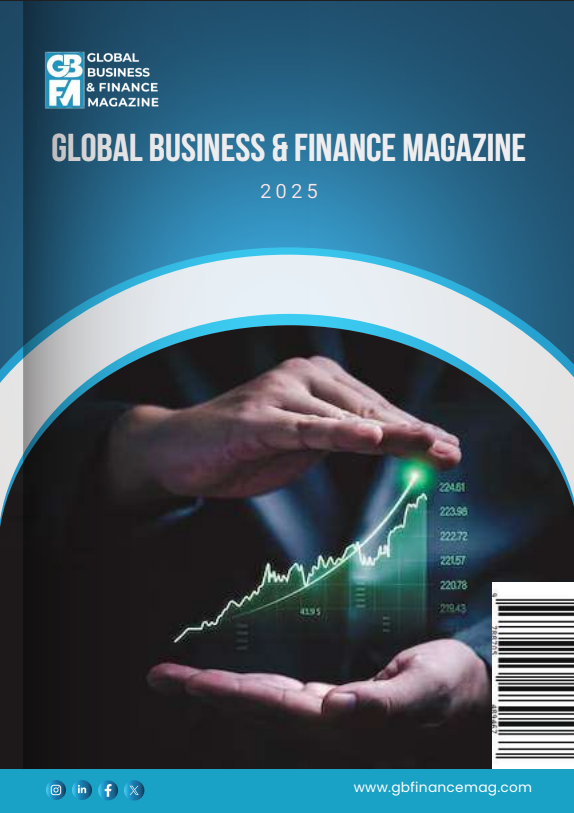In many of the world’s most advanced economies, hyper-globalisation and technological shocks such as AI have made many people’s lives seem less secure. But the traditional way of monitoring pay via repeated one-off surveys has limited our understanding of the volatility of earnings, and thus insecurity. This column uses newly available data from Britain’s tax authorities tracing monthly and weekly movement in earnings to reveal that, in the world of work, volatility is the norm. And in Britain at least, these bumps up and down in pay most heavily affect lower-wage workers, for whom they are harder to manage.
Around the world, no social buzzword is bigger than “security”. Political scientists use the concept to try and make sense of elections, while practicing politicians promise to offer it in order to win them (Green et al. 2024). Here in the UK our current finance minister has even flown to the US to promote what she calls “securonomics” (Reeves 2023).
All this flows from a sense that, in many of the world’s most advanced economies, life has got shakier. Hyper-globalisation of trade and finance together with technological shocks such as AI are said to have overtaken jobs, companies, traditional contracts, and other institutions that people used to rely on. After such political shocks as the original arrival of Donald Trump in 2016 and the Brexit vote in the UK, established worries about a so-called ‘precariat’ widened to encompass purportedly rising insecurity extending into the middle class, and besetting whole ‘left behind’ regions.
From the point of view of economists, however, this discourse has – until now – been dogged by a lack of precision. The security that matters most to many workers is being able to rely on their paycheque. Anecdotes and interviews often suggest a link between unreliable incomes and all sorts of problems – emotional, cognitive, and very practical, with the ability to make long-term financial plans about things like pensions and housing impaired (Angsten Clark and Otulana 2024). However, while there may be reason to suspect that such innovations as ‘gig’ working might have ramped up volatility and thereby insecurity, establishing whether this has actually happened has – until now – been devilishly hard to prove. Some researchers have responded by thinking laterally about the roots of economic populism, searching out more straightforwardly observable things, such as closed shops on high streets (Fetzer et al. 2024).
Fascinating as these approaches are, they are no substitute for understanding the basics of the volatility of earnings. The fundamental obstacle here is the main way in which pay has traditionally been monitored in Britain and much of the wider world: via repeated one-off surveys which take one-off snapshots of what individuals are paid. That is fine for gauging averages and gaps, or even – by comparing a series of snapshots – how averages and gaps evolve over times. It is hopeless, however, if what you want to know whether pay is bumping around. To see that you need something more akin to a video – enabling us to see the movement as it affects particular individuals through time.
To be fair, there are some so-called panel surveys that at least try to track down the same people, and track their fortunes year to year. 1 But a year is a very long time. Acute insecurity is more about being unsure about what is happening month to month, or even week to week. This high frequency volatility is precisely the type that has, until now, been most elusive. Fortunately, we have recently got our hands on something akin to a video camera, in the form of newly available data held by Britain’s tax authorities. For a representative group of some 250,000 employees, it traces monthly and weekly movement in earnings over five years to 2019. Our new study (Brewer et al. 2025a) is the first to exploit this to unearth many previously hidden facts. 2
So, what does our ‘video’ reveal? First of all, simply that there is an astonishing amount of volatility. Even though we’re only examining payrolled employees, for whom things should be much steadier than for casual workers and freelancers, an outright majority (57%) of those employed in successive months saw their pay move. And for many, these changes were large, with over a quarter (28%) of employees experiencing movement of over 10%, and more than one in seven (15%) facing a shift of a quarter or more. 3
Bumps up and down are indeed the norm. Look over a whole year for the continuously employed, and it is only a quarter (26%) who see broadly ‘stable’ pay, which never rises or falls by more than 10% of mean pay.
And yet not all of this movement is bad or insecurity-inducing; indeed, rises in regular pay are one important trigger. Bonuses can be a positive force too, as long as they are truly additional to the basic salary a worker needs to know they can rely on, rather than excessively substituting for it. We can trace their effects in the swelling of pay packets in March (the end of the financial year in the UK) most particularly in the finance and insurance sector, where on some measures bonuses appear to constitute the bulk (55%) of total renumeration in that month.
But some important forms of pay volatility are visibly related to insecurity and its psychological corollary: anxiety. Previous work based on snapshot surveys found that in 2017 around a quarter of all employees were “anxious” about unexpected changes to their hours of work, and 7% were “very anxious” (Felstead et al. 2018).
By tracing individual earnings over time, we are now able to shed new light both on the overall direction of volatility across the economy, and its concentration on particular groups. While it is certainly a very widespread phenomenon, it is not – overall – becoming any more so. Over the five years from 2014, a period of increasingly buoyant employment in which the risk of job loss declined, month-on-month volatility showed no sustained change. Volatility is, however intensely concentrated on very particular groups within the workforce: very young workers, temp workers, multi-jobbers. Fluctuations are exceptionally marked among the 12% of British workers who are paid weekly. These people are disproportionately lower-paid and in particular industries, such as textiles and food processing.
More generally, volatility turns out to be highest at the bottom-end of the pay scale, although with the twist shown in Figure 1: there is something of a U-shape to the data, with the highest-paid also experiencing more volatility than the middle.
Figure 1 Twin peaks: Volatility is most marked among the rich and the poor
Average arc percentage change in real monthly earnings compared to the previous month, among 20-59-year-olds working in both months, by monthly earnings decile: UK, 2014-15 to 2018-19


Note: Earnings are deflated using CPIH. Results are pooled across all months in dataset. Monthly earnings deciles are calculated based on earnings in month t-1 (excluding zeroes).
Source: Analysis of HMRC PAYE dataset.
But while the bonuses of professionals are not a pressing concern for public policy, bumping at the bottom of the scale – where it seems fair to guess that more individuals will be more exposed to the consequences – certainly is. All the more so because of the excess volatility is also concentrated on those, like temp workers, who have fewer employment rights.
Some obvious regulatory fixes can be directed towards the workplace, particularly new rights to notice and guarantees over hours for shift workers. The importance of this comes through in our data, where we can see most volatility in precisely those sectors that rely most heavily on the least-secure so-called ‘zero-hours’ contracts – such as restaurants, recreation and social care. A new Employment Rights Bill in the UK is well-targeted on these problems.
Of course, economic exposure and insecurity is about much more than the reliability of individual pay. The critical thing is total household income. Here patterns of partnering and any connection between partners’ earnings will both be important – factors public policy may well struggle to control. But what is also just as important, and very much within governments’ controls, are tax credits and other benefit top-ups for the low-paid.
Both the scale and detail of such schemes around the world vary significantly. And indeed, in the UK the approach has evolved from social security top-ups to credits linked to the tax system, and then back again. Along the way we have moved from a system that adjusted every six months to wages observed in the rear-view mirror; to one that tried to link awards to current incomes (but did so clunkily because it had to fit within a tax system arranged annually); and on to the so-called ‘real-time’ calculations of today’s Universal Credit, which respond quickly to earnings but are paid in arrears. The first made for stable benefit payments that claimants could rely on, but could not efficiently target resources at – or smooth total incomes for – those who had seen earnings drop. The second was much better at targeting help where theoretically needed, but in practice saw a lot of blameless claimants whose earnings had risen being overpaid for months on end – and then facing a stiff demand for repayment. The last sounds more nimble, but as it is always last month’s pay that counts, benefit payments can end up amplifying – rather than smoothing – the effect of undulating earnings on cashflow.
These design dilemmas are inescapably balancing acts. But switching on the video camera reveals two pertinent things to keep in mind in striking that balance. First of all, in the world of work, volatility is the norm. Recognise that reality, and set policy around it. Second, in 21st century Britain at least, these bumps up and down in pay most heavily affect lower-wage workers, for whom they will be harder to manage. This points both to the importance of targeted top-ups – and to arranging the detail of schemes to deliver them with meticulous care.
Source : VOXeu





